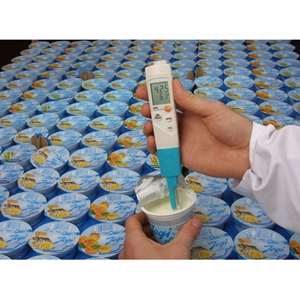Australia’s dairy industry has been very strong internally for many years. Recently, however, there has been a significant shift towards offshore markets.
Driven by growing demand from Asian countries in particular, the dairy industry has had to rapidly change focus to producing large quantities of high quality products.
To assist with this demand, the ARC Dairy Innovation Hub has been established, comprising some of the country’s top research groups. The five-year, $13 million Industrial Transformation Research Program aims to help the industry produce dairy products with a high nutritional value as well as establishing long term relationships with overseas countries.
The ARC Dairy Innovation is co-funded by the Australian Research Council, Dairy Innovation Australia Ltd, The University of Melbourne and The University of Queensland.
Associate professor Sally Gras from the University of Melbourne told Food Mag how important the dairy industry was to Australia and what the hub’s goals are.
“Dairy manufacturing is currently worth more than two billion dollars to the Australian economy and will continue to increase as the demand for food required in Asia doubles in coming years,” she said.
“We will work to find solutions and opportunities for the Australian dairy industry to make the most of our geographic location and to grow our exports into the lucrative Asian market.”
What products does the Hub hope Australian manufacturers can create?
Becoming a world-leader in the dairy industry means Australia needs to set itself apart from regional rivals New Zealand and China. The Hub’s researchers explained creating high quality, improved flavoured products could be the answer.
These products include easier-to-spread butter and dairy blends, as well as lactose-free and low fat milk and yoghurt that can retain texture and quality for longer.
How will the Hub assist Australian manufacturers reach their potential?
Dairy manufacturing is a complex process, so researchers will need to work hard to develop new and innovative techniques for dairy manufacturers.
Ms Gras is confident the industry can improve as a result of the Hub’s research.
“These insights will help manufacturers make new products and design processes that can reduce waste and lead to water and energy savings.” she said.
Importance of pH in the dairy industry
If the dairy industry is to began creating high quality products for overseas markets, then there will need to be special consideration addressing hygiene standards and testing facilities.
To meet the strict rules and regulations surrounding exports and imports, the pH levels of the dairy product should be the focus.
At the various stages of the sterilisation process, pH levels are key as the lower this number is, the faster the overall process will be.
Testing the pH levels ensures that any impurities of the dairy product can be eliminated. It also gives the opportunity to investigate if there is any sign of infection when it is collected and when it is ultimately delivered for processing.
pH levels in yoghurt
As yoghurt is a complex dairy product, pH levels can easily disrupt the process and create a high bacteria count. In either case, consumer health and Australia’s reputation could be at risk.
If you are producing yoghurt, the pH level needs to be between 4.4 and 4.6 for the cooling of the cultural milk to take place. A reminder is that if you are adding fruit, the yoghurt and fruit must be at the same pH level to avoid bad reactions at the end of the process.
If Australia manufacturers wish to produce a long lasting yoghurt, the finished product needs to record a pH level of between 4 and 4.4
Options for industry
Testo have range of options for measuring pH levels in dairy products that are available for industry to use.
The 206 pH2 – pH kit for semi solids is perfect for spot checks in factories to ensure levels are correct. The benefit of this tester is that it is leak-proof, maintenance-free and safe to clean for multiple batches and products.









 Reduce cooking oil costs while ensuring quality
Reduce cooking oil costs while ensuring quality Expert knowledge on CO2 monitoring
Expert knowledge on CO2 monitoring Refrigeration knowledge - in 3 modules
Refrigeration knowledge - in 3 modules



